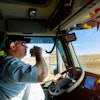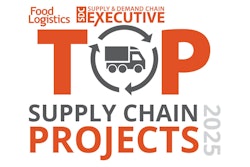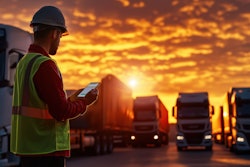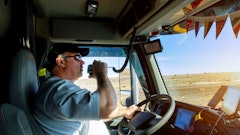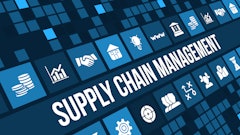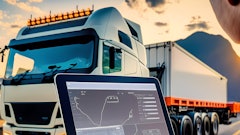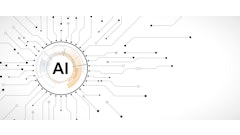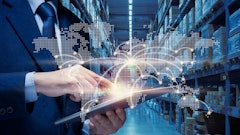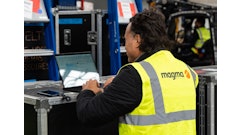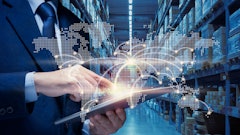
For businesses operating across the supply chain, including third-party logistics (3PLs), warehousing partners, and other important players, the ability to demonstrate a commitment to a safe, secure, and efficient operation is increasingly important. We are on the cusp of supply chain operators leveraging modern surveillance solutions to engage in better, more reliable business practices. As organizations have embraced edge computing, video analytics, and artificial intelligence (AI)-based applications, many have found that today’s surveillance solutions don’t just improve security—they can be used to support automated processes, collect business intelligence, and drive new operational efficiencies as well. In fact, many non-security-related functional groups within the organization are already discovering computer vision applications. For these organizations, video devices are no longer just an expenditure, but an investment in the health and success of the overall business.
Modern surveillance solutions bolster security capabilities
It's important to remember that modern cameras can hardly even be called cameras—they are, essentially, a full computer situated at the network edge. Today’s powerful devices are effectively self-contained Linux servers, capable of running a wide range of analytics. Whether your organization relies on a cloud, on-premises, or hybrid deployment, this adds significant value. With the help of deep learning-enabled computer vision capabilities, these devices are becoming increasingly powerful, able to perform highly complex tasks. And since safety and security operations have long been the primary application for video surveillance solutions, it makes sense to start there.
As with any business function, it’s important for organizations to be able to secure assets along their entire supply chain from theft, vandalism, and other criminal activity. Whether that means protecting warehouses from trespassers, shipping containers from burglars, or freights from would-be thieves or saboteurs, today’s businesses have a wide range of surveillance devices at their disposal. What’s more, the evolution of video technology and advancement of AI-based analytics mean those solutions are accurate and reliable than ever, which means businesses no longer need to rely solely on human beings to notice suspicious activity.
The advent of new, deep learning-enabled chipsets has allowed organizations to run advanced video analytics on the devices themselves, providing customers with additional flexibility and allowing them to deploy a cloud, on-premises, or hybrid model depending on their specific circumstances and needs. This has made analytics increasingly accessible to organizations of all sizes, putting new security solutions in the hands of businesses up and down the supply chain. For example, warehouse operators can leverage video analytics capabilities to create geofencing around their locations, automatically alerting security personnel if potential trespassers are detected. Today’s solutions can even tell the difference between a human figure and a bear or a deer, limiting false alarms and ensuring that security teams can trust the technology they rely upon.
Modern analytics can also be trained to automatically recognize the logo on the side of a delivery vehicle and check it against delivery schedules. License plate recognition can ensure that only approved vehicles are granted entry through automatic gates, and other analytics can detect when a vehicle attempts to follow an approved vehicle through the gate, contact security or law enforcement if needed. Access control stations within the facilities themselves can ensure that only authorized personnel can enter secure or sensitive areas, using biometrics, QR codes, or even facial recognition to grant approval. Video devices can alert security if unauthorized entry is detected, or if suspicious persons are seen loitering near or blocking entry or exit areas. By automatically identifying and alerting on abnormal behavior, modern security systems are bolstering security capabilities across the board.
Leveraging video data to enhance business operations
While security is of high importance throughout the supply chain, modern video solutions have capabilities that go far beyond protecting physical locations. Today’s analytics can provide business intelligence insights, improve operational efficiency, streamline logistics, and engage in countless other activities designed to improve the business’s bottom line. While video surveillance has traditionally been considered a necessary expenditure, the ability to leverage them for business-related purposes has turned that on its head. Modern video devices no longer represent a cost center—they represent an increasingly valuable investment in business operations.
Some of the business-related capabilities are directly related to the devices’ safety and security applications. If a device can be trained to automatically recognize approved vehicles and grant them entry to the premises, that can dramatically reduce the need for human involvement in the approval process, streamlining the entry and exit process and resulting in significant time savings. Regulatory and compliance also factor in here. Video analytics can be used to ensure exits are not accidentally blocked and employees are wearing hard hats or other personal protective equipment (PPE) in appropriate areas. Devices equipped with thermal imaging may even be able to detect chemical leaks or other potentially dangerous (and costly) incidents quickly. As a result, organizations can avoid costly fines, injured employees, and damage to merchandise and facilities.
AI-based computer vision platforms are also being used to digitize yard and warehouse management operations by automatically indexing and analyzing trucks and trailers entering and exiting facilities. Most yards manually record license plate, DOT, and trailer numbers, and human operators confirm that trucks have appointments, check that they are hauling the correct trailers, and maintain an inventory of available vehicles. Unfortunately, this manual process is both inefficient and prone to error. Additionally, it can lead to choke points, increased labor costs, and poor resources utilization. By automating the process, computer vision platforms can significantly streamline entry and exit. Further analysis in the cloud or within on-premises servers can provide additional data-driven insights, identifying new patterns and correlations and leading to even greater efficiencies.
Machine learning can also reduce common errors in data recording and integrate with operational databases and other management systems to provide full vehicle profiles beyond what cameras can see, resulting in better, more accurate information. This data can even be integrated with (for example) logistics applications to identify open loading or unloading bays and direct trucks to the appropriate stall in real time. That keeps traffic moving and avoids unnecessary confusion and delays that can negatively impact the business’s bottom line. This same technology can monitor shipping containers, even going so far as to track individual containers as they arrive and depart. This data can even be correlated with video data to help administrators identify areas where efficiency could potentially be improved. Time is money for businesses, and every small increase to efficiency can create significant financial benefits.
Integrating video data throughout the organization
In many ways, businesses in the supply chain sector have an advantage over those in other industries: because security has long been a high priority for these organizations, most are already equipped with the modern surveillance devices they need to substantially improve their business operations. As computer vision capabilities become increasingly advanced and businesses leverage cloud computing, local servers, or a combination of the two, businesses up and down the supply chain will be able to take advantage of exciting new analytics designed to not only enhance the safety and security of their locations, but improve their bottom line as well. By incorporating the data gathered by video analytics with information from other areas of the business, these organizations are generating actionable insights that drive efficiency and streamline operations across the board.

